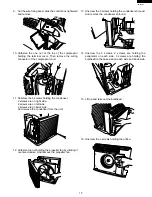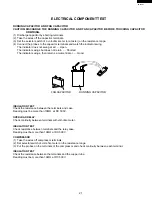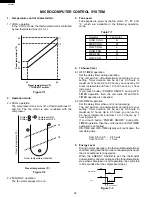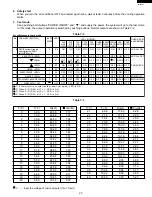
20
AF-06CSL
Type of evacuation methods
1. Piston Type Compressor No good.
System parts must be above 110˚F.
2. Rotary Vacuum Pump Disavantages.
Low CFMC. 4 oil gets dirty.
3. Single State Vacuum Pump will not clean oil.
Oil must be changed often.
4. Two Stage Vacuum Pump will reach 50 microns.
First stage is below atmospheric pressure.
Moisture is removed into second stage which works up
to atmospheric pressure thus keeping oil clean.
Manometer cannot be read to 1/2 mm. Micron gauge
reads from 25,400 microns to 0.
LEAKS
Several methods are used to detect leaks in systems.
Electronic Leak Detectors are very sensitive and are able to detect leaks down to 1/2 ounce per year.
A good electronic leak detector is generally far better in locating very small leaks.
Halide Torch be sure the room is free from refrigerant vapours. Watch the flame for the slightest change in calor.
A very faint green indicates a small leak. The flame will be unmistakably changed to green or purple when large leaks
are encountered. To simplify leak detection pressurize the system to approximately 75 lbs.
Some leaks can be located by a visual inspection of the system components and solder joints and if oil is found at any
given location it generally is a sign that a leak exists at that point due to the fact that flame does carry oil with it travels
through the system.
Soap Bubbles
Liquid detergents can sometimes assist in finding small leaks by brushing detergent on the suspect area and
watching for bubbles. Before applying detergent be sure that the system is pressurized.
Tap line devices are permissible for diagnosis only they are not suitable when evacuating the system. After the diagnosis
has been made they must be removed so that the system will be restored to a hermeticly sealed condition.
It becomes clear that good equipment and maintained properly must be used in order to remove air and moisture from the
system.
When a vacuum of 1,000 to 500 microns is reached, block off the vacuum pump from the system.
This is done by closing the value between the pump and system. If the micron gauge does not increase above 1,000, the
system is free of moisture and no leak exists. If the micron gauge increases to higher levels moisture or a leak exists.
HIGH VACUUM PUMP
Hook up for Evacuation and charging
TO RELATED SERVICE
VALVE OR PROCESS
TUBES OF THE UNIT.
LARGE DIAMETER
BRAIDED VACUUM
HOSES
HIGH VACUUM
MANIFOLD
DIAL-CHARGE
CHARGING CYLINDER
HIGH SIDE
GAUGE
LOW SIDE
GAUGE
ELECTRIC
VACUUM
GAUGE
Figure 5
















































